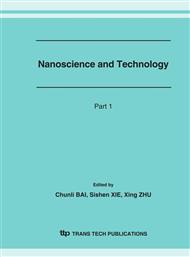p.373
p.377
p.381
p.385
p.389
p.395
p.401
p.407
p.413
Pentacene Growth on Organic-Inorganic Hybrid Type SiOC Film
Abstract:
Pentacene channel for organic thin film transistor was deposited on the SiOC film by thermal evaporation. The growth of pentacene is related with the Diels-Alder reaction and the nucleophilic reaction by the thermal induction. The surface is an important factor to control the recursive Diels-Alder reaction for growing of pentacene on SiOC film. The terminal C=C double bond of pentacene molecule was broken easily as a result of attack of the nucleophilic reagents on the surface of SiOC film. The nucleophilic reaction can be accelerated by increasing temperature on surface, and it making pentacene to grow hardly on the SiOC film with a flow rate ratio of O2/(BTMSM+O2)=0.5 due to its inorganic property. The nucleophlic reaction mechanism is SN2 (bimolecular nucleophilic substitution) type.
Info:
Periodical:
Pages:
389-394
Citation:
Online since:
March 2007
Authors:
Keywords:
Price:
Сopyright:
© 2007 Trans Tech Publications Ltd. All Rights Reserved
Share:
Citation:


